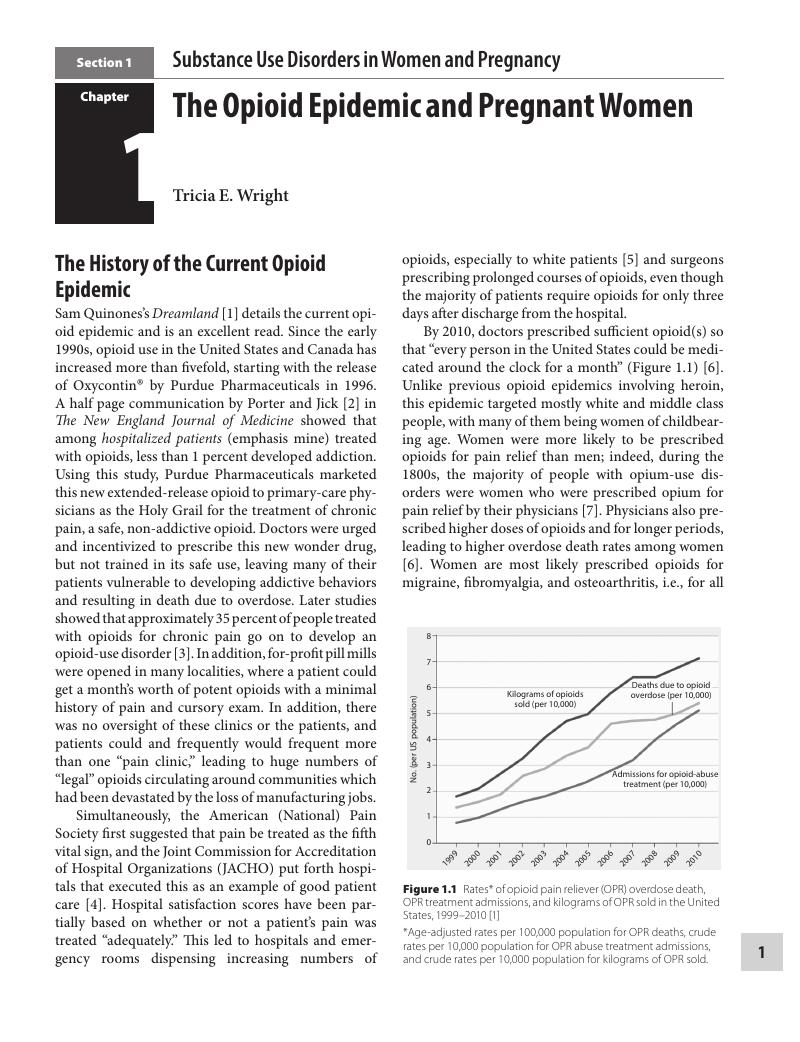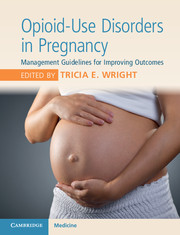Book contents
- Opioid-Use Disorders in Pregnancy
- Opioid-Use Disorders in Pregnancy
- Copyright page
- Contents
- Contributors
- Preface and Acknowledgments
- Section 1 Substance Use Disorders in Women and Pregnancy
- Chapter 1 The Opioid Epidemic and Pregnant Women
- Chapter 2 Screening, Brief Intervention and Referral to Treatment for Opioid Use Disorders in Pregnancy
- Chapter 3 Substance Use Assessment during Pregnancy
- Chapter 4 Co-occurring Mental Health Conditions in Pregnant Women with Opioid Use Disorders
- Chapter 5 Trauma and Posttraumatic Stress Disorder in Women with Opioid-Use Disorder in Pregnancy
- Chapter 6 Intimate Partner Violence, Pregnancy and Substance Use Disorder
- Chapter 7 Medical Comorbidities in Women with Opioid Use Disorders in Pregnancy
- Chapter 8 Harm Reduction Principles in Women with Opioid Use Disorder in Pregnancy
- Section 2 Antepartum and Intrapartum Care
- Section 3 Postpartum
- Section 4 The Newborn
- Index
- References
Chapter 1 - The Opioid Epidemic and Pregnant Women
from Section 1 - Substance Use Disorders in Women and Pregnancy
Published online by Cambridge University Press: 08 June 2018
- Opioid-Use Disorders in Pregnancy
- Opioid-Use Disorders in Pregnancy
- Copyright page
- Contents
- Contributors
- Preface and Acknowledgments
- Section 1 Substance Use Disorders in Women and Pregnancy
- Chapter 1 The Opioid Epidemic and Pregnant Women
- Chapter 2 Screening, Brief Intervention and Referral to Treatment for Opioid Use Disorders in Pregnancy
- Chapter 3 Substance Use Assessment during Pregnancy
- Chapter 4 Co-occurring Mental Health Conditions in Pregnant Women with Opioid Use Disorders
- Chapter 5 Trauma and Posttraumatic Stress Disorder in Women with Opioid-Use Disorder in Pregnancy
- Chapter 6 Intimate Partner Violence, Pregnancy and Substance Use Disorder
- Chapter 7 Medical Comorbidities in Women with Opioid Use Disorders in Pregnancy
- Chapter 8 Harm Reduction Principles in Women with Opioid Use Disorder in Pregnancy
- Section 2 Antepartum and Intrapartum Care
- Section 3 Postpartum
- Section 4 The Newborn
- Index
- References
Summary

- Type
- Chapter
- Information
- Opioid-Use Disorders in PregnancyManagement Guidelines for Improving Outcomes, pp. 1 - 8Publisher: Cambridge University PressPrint publication year: 2018

